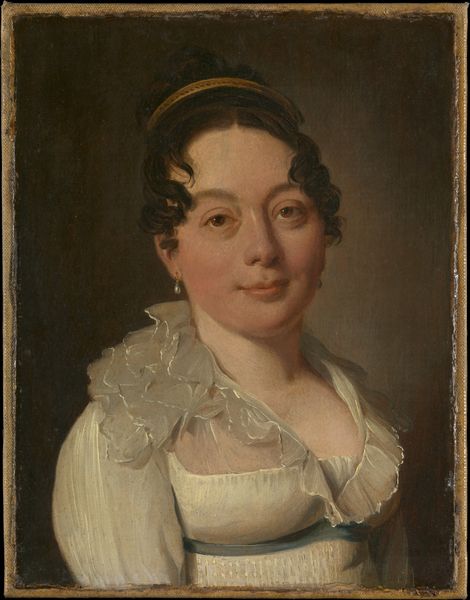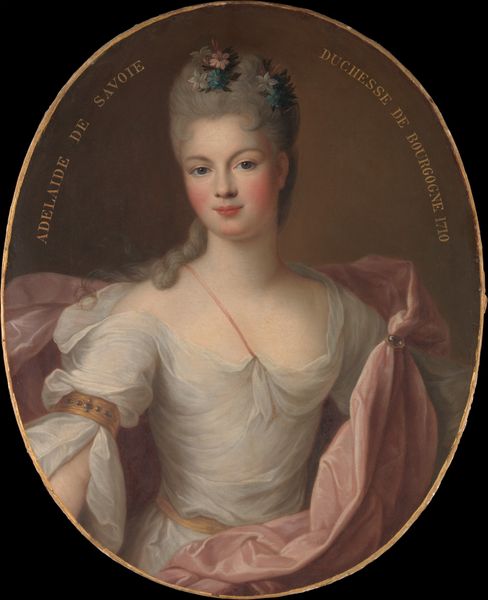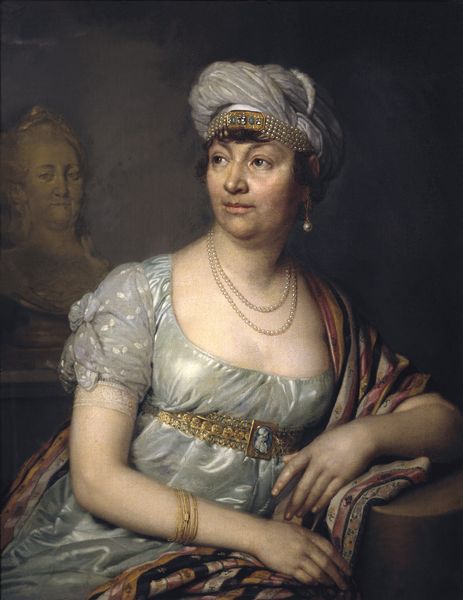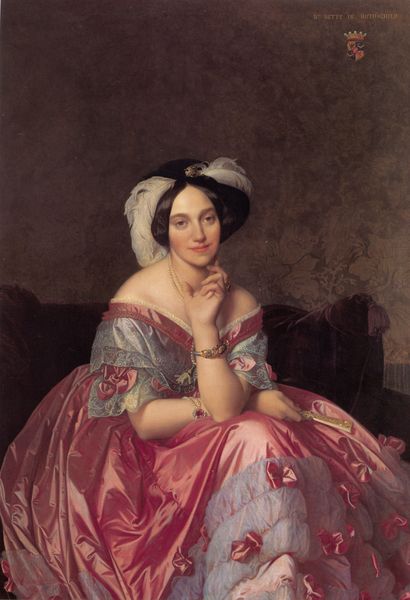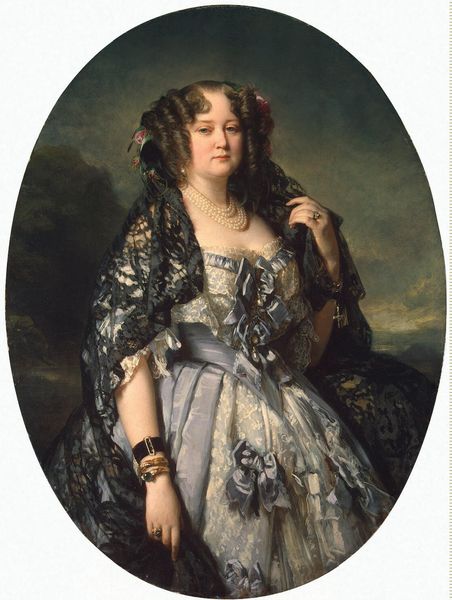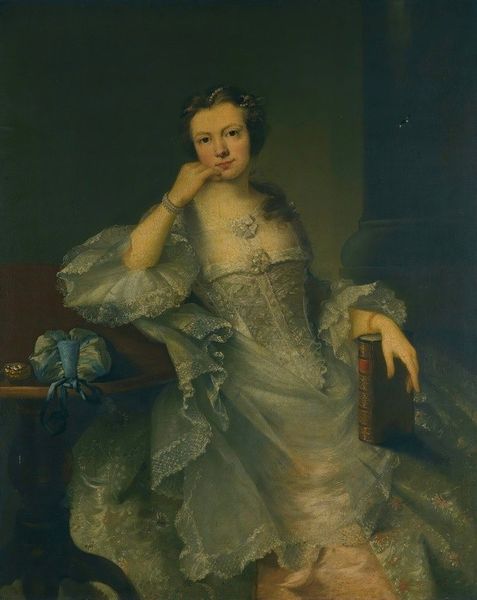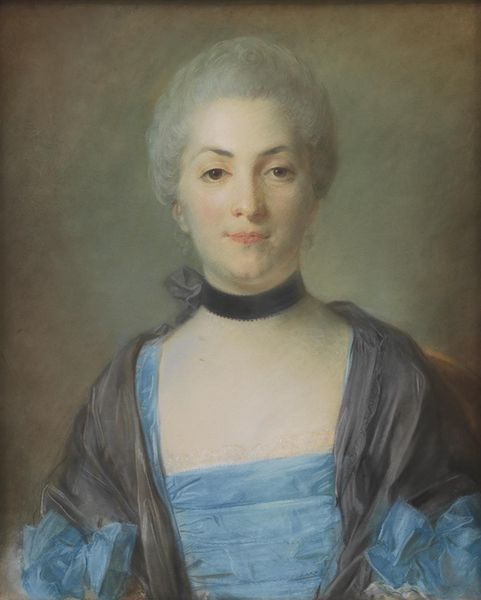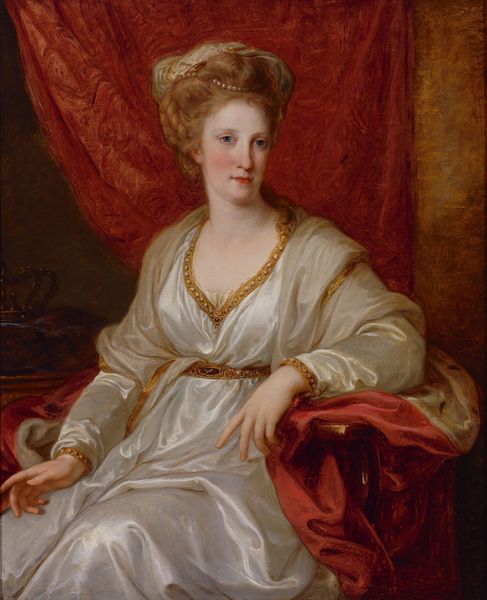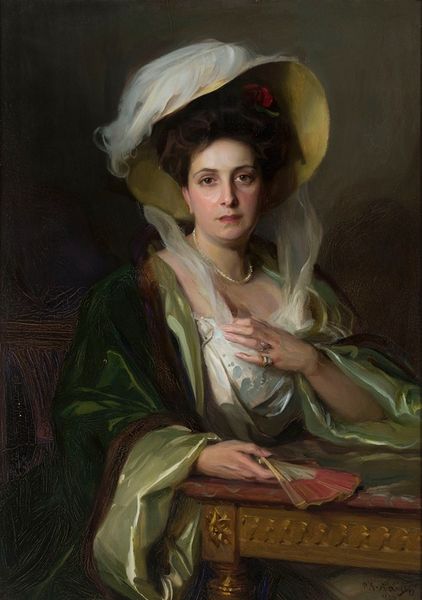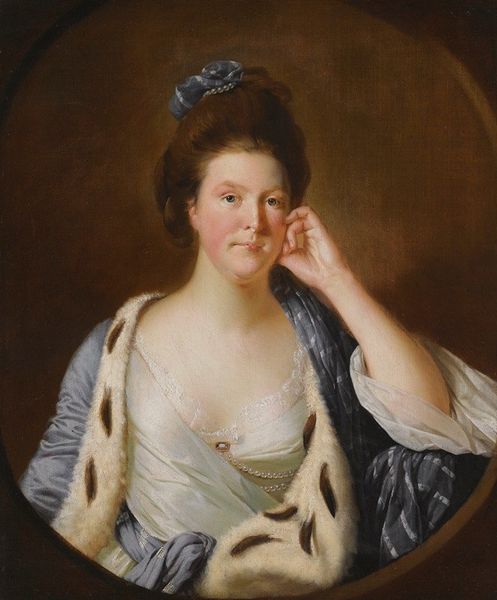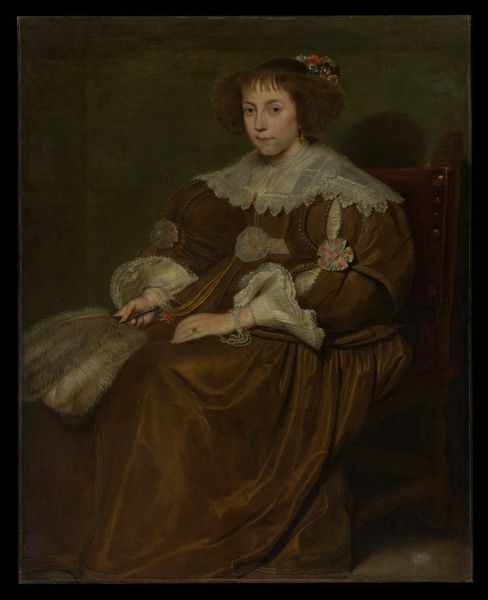
Copyright: Public domain
Joseph Duplessis painted Madame de Saint-Maurice with oil on canvas. The painting is dominated by pale pinks and creams, with soft textures that convey a sense of delicate refinement. Duplessis masterfully uses lace, ribbons, and powdered hair to engage with the semiotics of 18th-century French aristocracy, offering a portrait of Madame de Saint-Maurice that is as much about societal status as it is about individual likeness. The visual elements of dress and adornment speak to the cultural codes of wealth and taste. Compositionally, the subject's placement and gaze create a sense of intimacy, while the use of chiaroscuro adds depth. Consider how the visual language of portraiture at the time reflected broader philosophical concerns about identity and representation. This is not merely a snapshot of a person but an orchestration of signs that communicate complex ideas about class, beauty, and the very nature of representation.
Comments
No comments
Be the first to comment and join the conversation on the ultimate creative platform.
